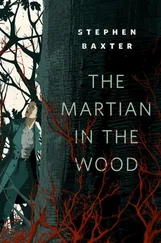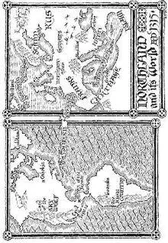Among the animals, too, we see divergent creatures evolving similar forms to fill particular roles. Whatever animal kingdom is dominant there are always herbivores and carnivores, grazers and browsers, runners, flyers and swimmers; there are always food chains and predator-prey hierarchies, just as we observed in Pandora. This applied among the dinosaurs as it does among the mammals; it applies in the oceans as well as on land. Thus the mammals, starting from the runty, squirrelly stock that survived the dinosaur era, quickly evolved ferocious predators and fleet prey to fill the stage vacated by the dinosaurs.
One of the most fascinating examples, to my mind, is New Zealand, where there were virtually no native mammals at all aside from bats, and all the usual roles were filled by descendants of the birds and insects and bats that flew there, or were blown over from the mainland. Thus the huge moas were flightless browsers, preyed on by giant eagles. This unique ecology was broken up when humans arrived around thirteen centuries ago.
It is as if there are a series of “niches” out there in evolutionary space, idealised roles which if left empty will be filled by some creature or another, given time for natural selection to work. Evolutionary biologist and science-fiction writer Jack Cohen says there are evolutionary “universals”: features that will usually, perhaps always, crop up in an ecology, and which we could then expect to find in an alien ecosphere.
This applies to features of the body too. Eyes are a famous example. Life on this planet, from insects to crustaceans to humans, seems unreasonably eager to evolve eyes. Nine different physical principles have been used to evolve eyes, each of them occurring many times in nature. Perhaps on a planet with a transparent atmosphere and abundant light, like Earth, like Pandora, eyes are such an obvious advantage they should be considered a universal. As we saw in Chapter 21another common example of multiple evolution is flapping flight (bats, pterosaurs, birds, insects). We see plenty of flying creatures on Pandora.
On the other hand, there are body features, behaviours and life strategies that have emerged only once on Earth, as far as we know. An example is the diving bell spider. It’s not the only air breather that has taken to the water, but unlike such creatures as dolphins that need to return to the surface to breathe, the spider uniquely (apart from humans) takes down its own air supply with it.
Meanwhile, Jack Cohen says, alongside evolutionary “universals” there are “parochials”: unique solutions, or one-off details the choice of which doesn’t make much difference in the grander scheme of things. Earth’s backboned animals all share a four-legged body plan because we happened to inherit it from the first fishy mud-skipper-like beasts that crawled out onto the shore. If those early ancestors had happened to have six limbs or eight, then, I suppose, so would we—and we can guess that the equivalent pioneer mud-skipper on Pandora must have had six limbs, given the prevalence of that body plan among the fauna there.
But we may be thinking on too small a scale.
I suspect a convergent-evolution sceptic would protest that I’ve been much too narrow in picking examples of convergence mostly from multicellular vertebrate creatures. Well, we are multicellular vertebrate creatures, and it’s natural for us to think that evolution had to produce something like us, and so we look for similarities with creatures like us. But multicellular vertebrates are a small subset of the panorama of possibilities for life—and possibly not an inevitable one.
Consider this. Life on Earth is some four billion years old, and got going here as soon as it could. But multicellular creatures only arose some six hundred million years ago, in the last one-seventh part of life’s long history. Maybe that’s telling us that life is common, for it arose quickly on Earth, but multicellular life isn’t , for it arose so late. Maybe when we get to Pandora we are most likely to find life, but not multicelled complex life—nothing but slime and algae and huge dreaming mounds of bacteria, with not a snail to feed on them.
And even if you have multicelled life, it doesn’t have to have a skeleton. The Na’vi and plenty of other fauna of Pandora evidently do have internal skeletons, as we see from the leonopteryx skull hanging up in Hometree, and the frame of bones, vertebrae and ribs, to which Grace and Jake are strapped during the assault on Hometree. But again, on Earth, vertebrates evolved relatively recently, something like five hundred million years ago. The first vertebrates were the fish, and today the class includes the mammals, the birds, the reptiles and the amphibians. But they, we, represent only five per cent of the planet’s animal species. The majority of the planet’s multicellular organisms, such as sponges, flatworms and mollusc, get along fine without internal skeletons. Maybe if you re-ran evolution it wouldn’t be necessary for vertebrates to evolve on Earth at all—or, indeed, Pandora.
As noted before, in the context of Avatar we always have to remember “creative licence.” The viewing audience needs to be able to recognise what it sees onscreen, and yet have a feeling of alien-ness. There is a tension between the familiar and the strange. Thus the direhorse is recognisably a “horse,” even though once you recognise that you immediately start to spot differences from terrestrial horses. Images of a world without vertebrates would, I suspect, have simply been so strange visually as to baffle us.
As with the issue of the origin of life itself, the jury is out on convergent evolution. There’s only so far you can go with speculations based on the single example we have, Earth. We’re just going to have to go out to Mars and Titan and Pandora to find out.
But certainly we can say that the flora and fauna of Pandora as depicted onscreen, with its mixture of universal features—predators and prey, eyes, wings—and parochials—six limbs and four fingers—do present in many ways a pretty plausible picture of how life on other worlds might appear. And it’s a tribute to the imaginative discipline of the movie’s creators that nothing on the screen is there just because it looks pretty; everything has a role in the greater ecology—everything we see is there because it needs to be there.
On Pandora, however, human explorers found, not just life, but intelligent life.
They found the Na’vi.
PART SEVEN

NA’VI
“I see you.”
—Jake Sully, Neytiri and others
In the movie Avatar the Na’vi we learn most about are Neytiri’s Omaticaya clan. There are however many other clans on Pandora, which we glimpse when Jake as Toruk Macto calls on the Na’vi to unite against RDA. Na’vi languages differ to a minor extent, as do their physiologies—details of their height, their skin tone—but they all seem to be of one species, as the many races of mankind are a single species.
The Na’vi live essentially by hunting and gathering, from the natural fruits of the world around them. Hunter-gatherers typically live off a variety of food sources. They really do hunt and gather. Among humans, hunting may be a prestigious male activity, though the women’s gathering of food from sources like roots, fruit, nuts and small animals may actually bring in more nutrition to the group. But it’s wrong to over-generalise and to draw gender stereotypes; every culture is different. Certainly the variety of food we see in Avatar is credible, from avatar-Jake’s first mouthful of fruit when he escapes from the lab, to the teylu larvae he eats during his first encounter with the Na’vi, to the hexapede he hunts down with Neytiri. The Na’vi do however have a kind of incipient agriculture, which they call ska’waylu which means encouragement, a kind of elementary husbandry of favoured plants. This behaviour is thought to have led to the development of full-blown farming on Earth.
Читать дальше











